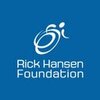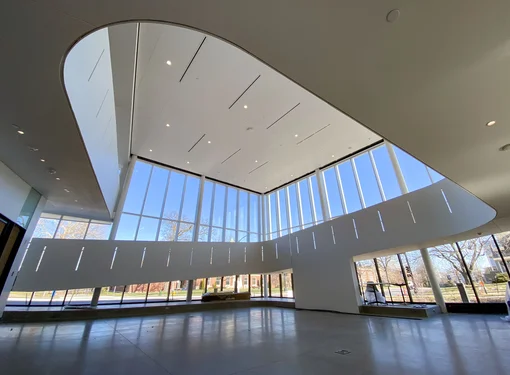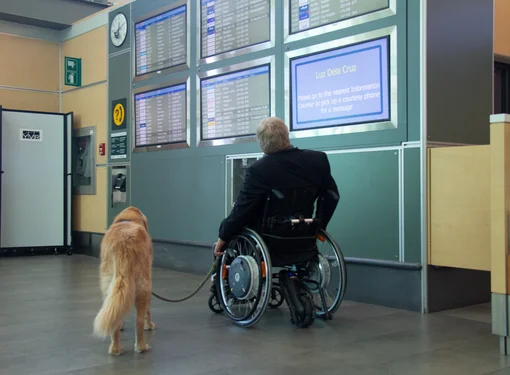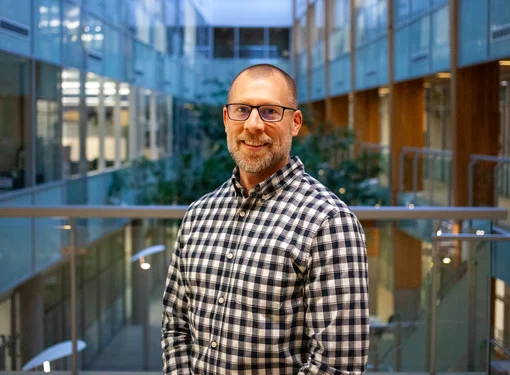Four Innovations for the Future of Accessibility
This year’s theme for International Day of Persons with Disabilities (IDPWD) is “The Future is Accessible”. We can’t think of a more appropriate subject for the current state of accessibility—there is still a long way to go, but each day we’re getting a little bit closer. Thanks to new legislation, innovative technology, and dedicated individuals, the future has never looked more accessible.
In honour of IDPWD, we are celebrating this year’s theme by asking four accessibility leaders what they’re excited about when it comes to the future of access. Here’s what they had to say.
Innovations for People who are Blind or Partially Sighted
Thanks to new smartphone software, accessible technology can fit in your back pocket—and is a lot more affordable.
“There is no doubt that access to information remains a huge barrier, whether it’s being able to read product ingredients at the grocery store, managing prescriptions, paying bills, or applying for a job. The tools by which these tasks were accomplished by people with sight loss in 2019 are very different—not to mention more abundant—than they were in 2009.
Smart phones, ubiquitous throughout the world, are mostly usable by people with sight loss. There is no longer the need to purchase expensive assistive technology which, just a few short years ago, cost more than the devices the software was to run on. Regardless of platform, PC or Mac, Android or iOS, out of the box, computers or smart phones come equipped with text to speech software, screen magnification to mention only a few.
The gap is continuing to narrow as more and more applications are available that can help someone who is blind manage their personal affairs, make informed decisions, stay in touch with family, and participate in their communities.”
— Lui Greco
Manager of Regulatory Affairs, Canadian National Institute for the Blind
Technology Built For and by People with Disabilities
Imagine if digital accessibility was about more than considering persons with disabilities in the design stage. By making the tools we use to build our digital world accessible, persons with disabilities become the designers themselves.
“This year we celebrated the 50th anniversary of the moon landing. In a world focused on the average and majority abilities, people experiencing disabilities inhabit a vast unexplored knowledge domain that takes up the ignored 80% of our diverse human needs. This domain is our next frontier. Addressing this grand challenge is the key to ethical and sustainable innovation, and a way to reverse rising inequality. This requires development tools and data science methods that are accessible, so that people with disabilities can be co-creators of a better future that will benefit us all.”
—Jutta Treviranus
Director of the Inclusive Design Research Centre
Innovations for People Who Are Deaf and Hard of Hearing
Accessibility for persons with hearing loss is being woven into everyday life by integrating hearing adaptive technology into the technology that we already use.
“Hearing adaptive technology is becoming more advanced and integrating with other technologies. For example, I recently upgraded to a new hearing aid and cochlear implant processor. These technologies in the past generally didn’t connect or pair to one another, however, recent partnerships in the industry are giving consumers more options. Now I have hearing adaptive technologies that ‘pair together’ through Bluetooth technology which allows me to stream directly, at ease, to my iPhone and other Bluetooth devices. This makes it easier for me to listen to music, communicate on the phone, or just watch TV without the need of other devices and cords.”
—Christopher Sutton
National Executive Director, Canadian Hard of Hearing Association
Accessibility Certification Gives Industry a National Benchmark
Rick Hansen, Founder of the Rick Hansen Foundation believes accessibility certification is a key part of the solution for an inclusive future.
“The status quo is clearly not sustainable. If government, private and social sectors work together, we can accelerate progress on behalf of all Canadians,” he says. “Every day, I’m inspired by innovations which are making the places where we live, work, learn and play more accessible and inclusive. Together we can create meaningful access for all.”
Unique in Canada, the Rick Hansen Foundation Accessibility Certification Program (RHFAC) is a tool which gives organizations a snapshot of their building’s accessibility and informs future accessibility improvements. Modeled after successful certification programs like BOMA Best and LEED, RHFAC aims to create a more accessible future by giving industry a certification to strive for which goes above and beyond building code. It is the first program to recognize that the accessibility a space needs to be judged on an individual’s entire experience, rather than by evaluating its features in isolation.







